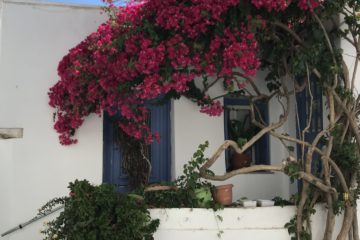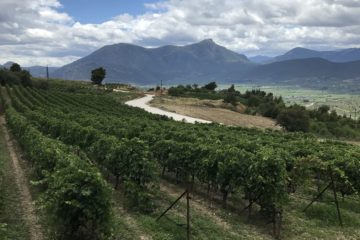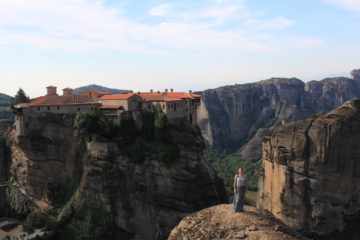A popular tourist trail in India is known as the Golden Triangle, which includes Delhi, Agra and Jaipur, so our arrival from Agra to Jaipur signaled our end of this loop. Jaipur is interesting in that it is known as the “Pink City” and is the capital of the state of Rajasthan, which is one of the most popular states to visit in the country and where we’ll be travelling for the next while. As Jess mentioned in our last post, we arrived into Jaipur in the evening after a lengthy private car ride from Agra with our Aussie friends, Nic and Phil. On Phil’s recommendation, we ended up booking a room in a place called Krishna Palace and were absolutely blown away by the beautiful architecture, details and finishes of this 80 year old converted mansion, which we got for a super cheap price. Staying there – after our charmingly grimy hostel in Delhi and underwhelming hotel in Agra – was a nice start to our time in Jaipur. [Editor’s note: Not to mention the beautiful rooftop, architectural touches in our room, and marble staircases! Sign me up.]
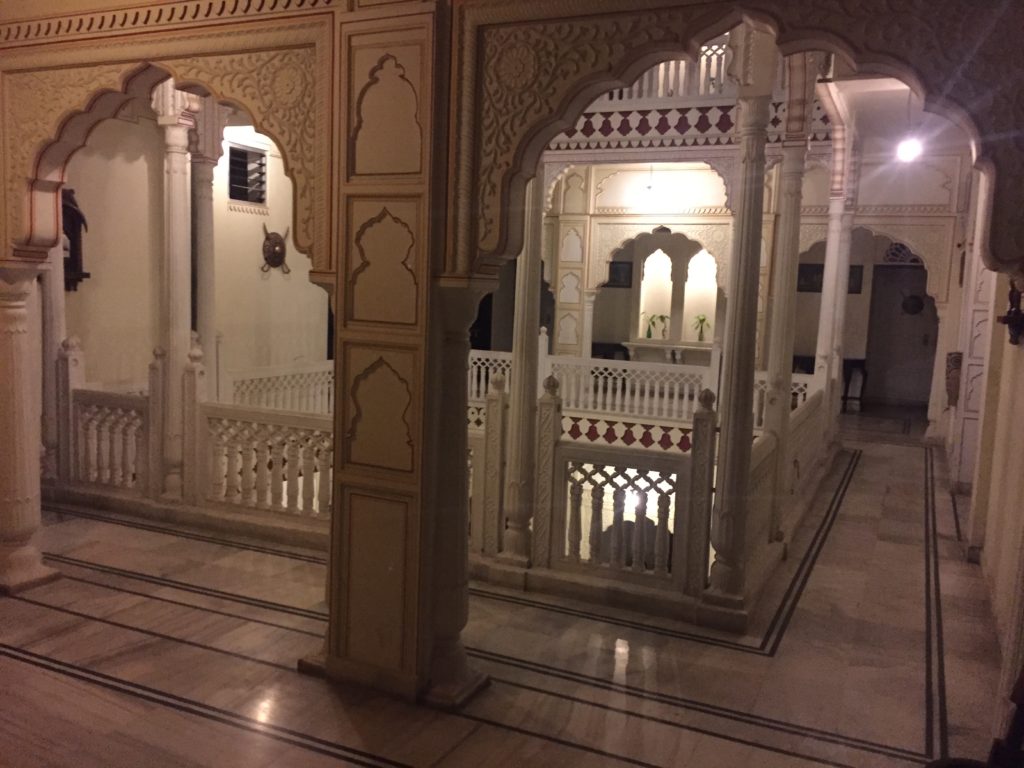
The landing in our hotel. Yes please!
On our first full day in Jaipur, we took advantage of the private “tour” (aka: a private car where we could tell him to take us wherever we wanted in the Jaipur city limits up until 5:30pm) that Phil already booked and joined along to visit some of the most prominent sights in the city. It was a swell arrangement. The four of us started by knocking out the biggest, most impressive attraction in Jaipur – the Amber Fort. Located a bit outside the city, the Amber Fort looms as a massive structure – with expansive walls stretching out in several directions – atop a hill that causes it to impressively dominate the skyline. While the fort and walls were built for military purposes, the king also made sure to make them opulent and beautiful so that he could host and impress foreign dignitaries. We opted to forego rides on colorfully painted elephants and instead trudged up the hill to the fort, where we were richly rewarded with amazing architecture and views. We had modest expectations for the visit, but were blown away by the intricate archways, colorful tilework (peacocks feature prominently in their designs, which Jess loved) and beautifully maintained grounds. Suffice it to say, we were all smitten. [Editor’s note: This is basically half fort, half palace, which is apparent in the incredibly ornate and opulent decorations. It’s an architecture and design lover’s paradise, though after walking around in the oppressive heat for a while, we were ready to leave.]
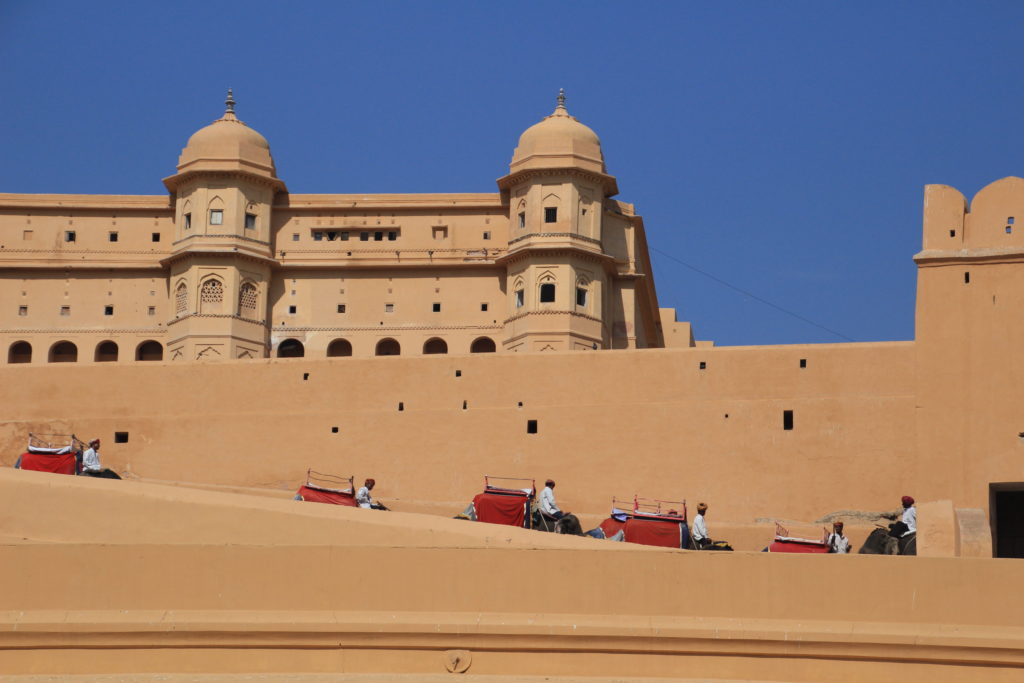
Elephants with red blankets walk up the ramp to the Amber Fort.
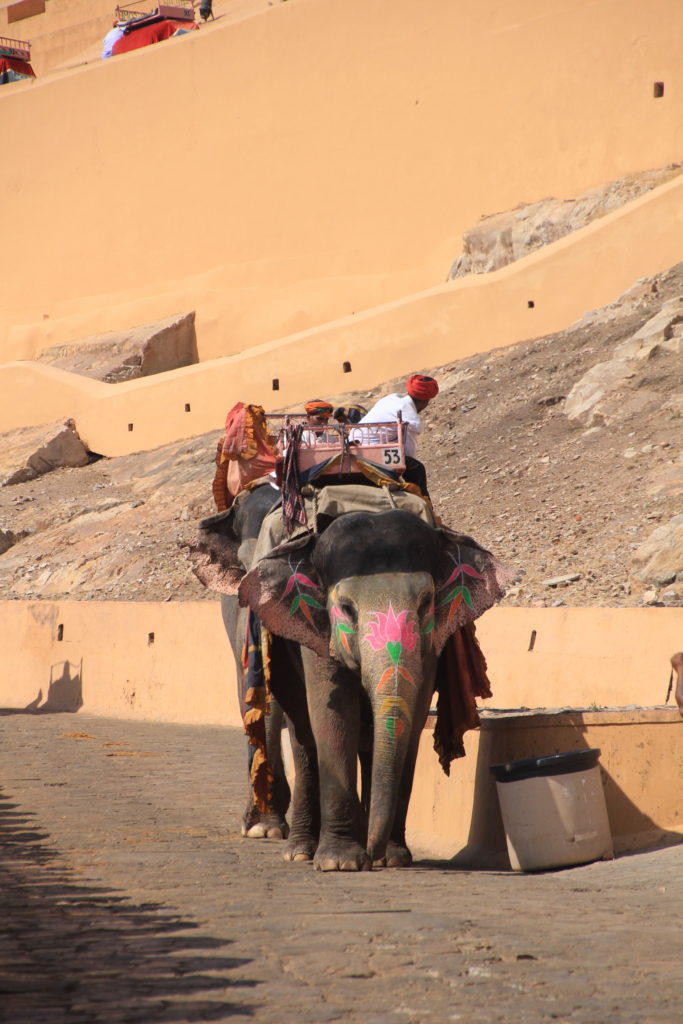
An elephant with a painted face returns after dropping off a passenger.
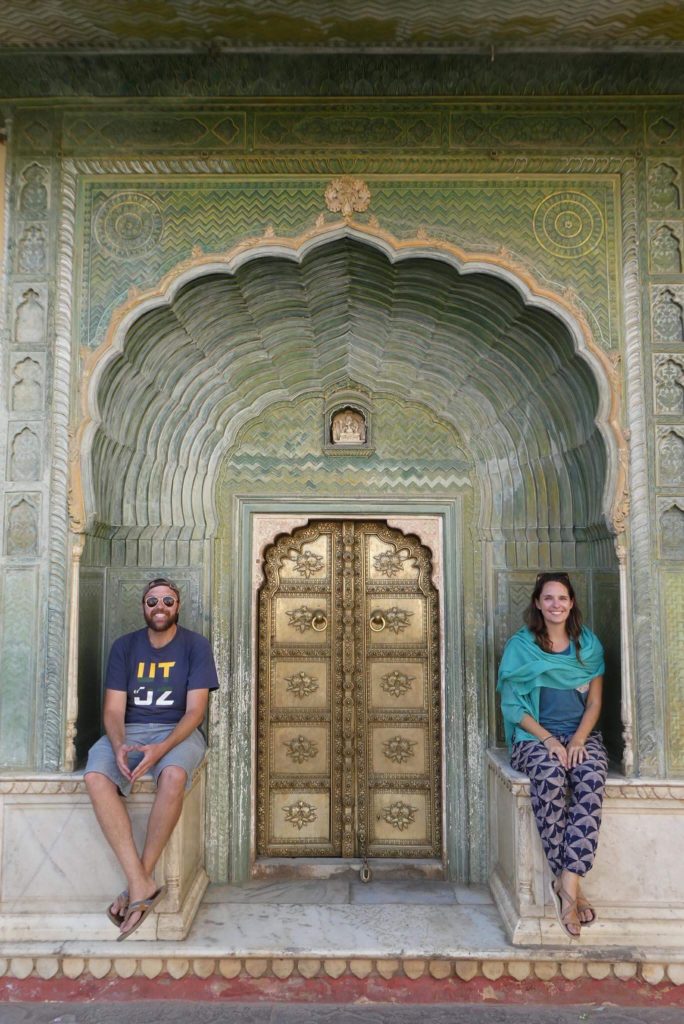
Intricate decorations on a doorway at Amber Fort.
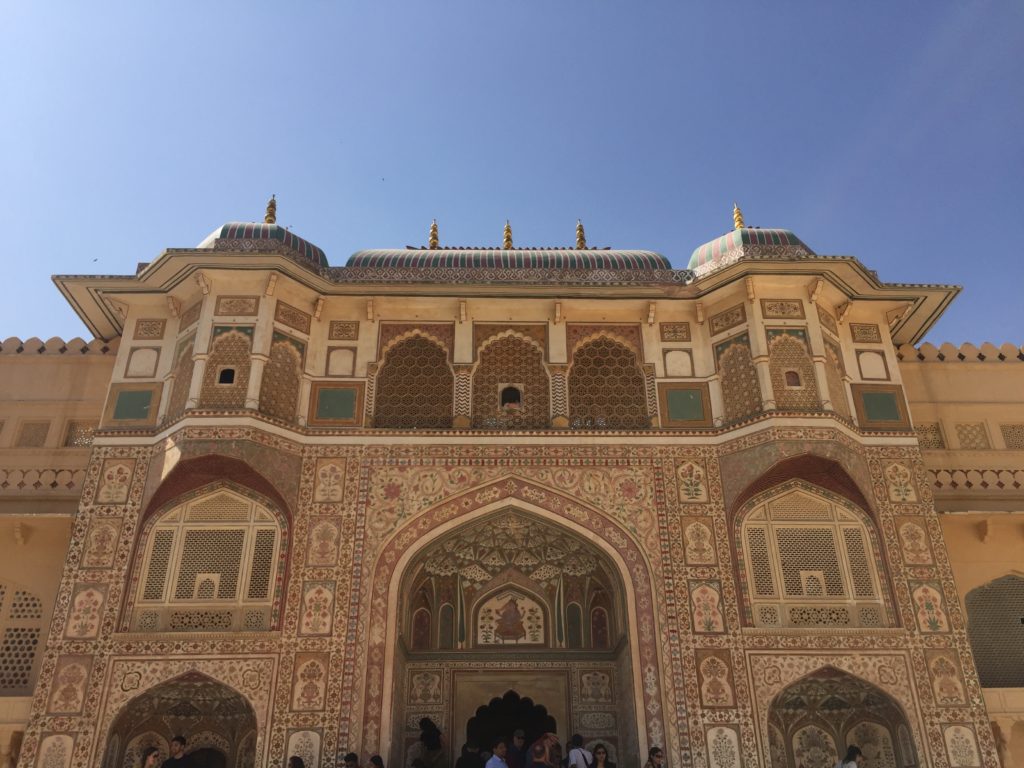
More impressive architecture.
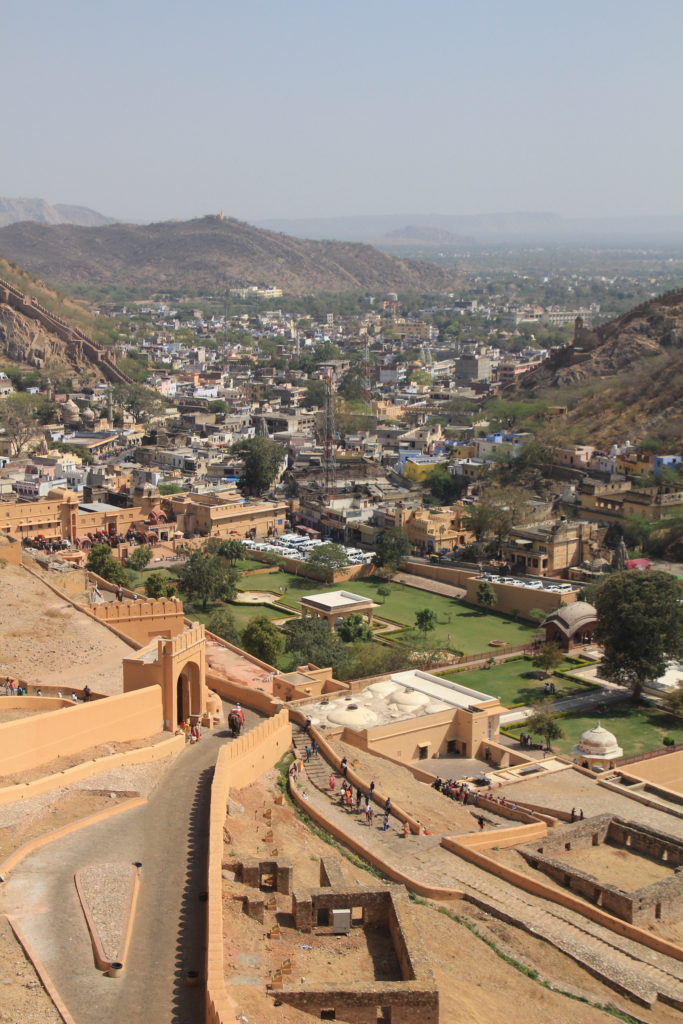
Looking out over Jaipur from the fort.
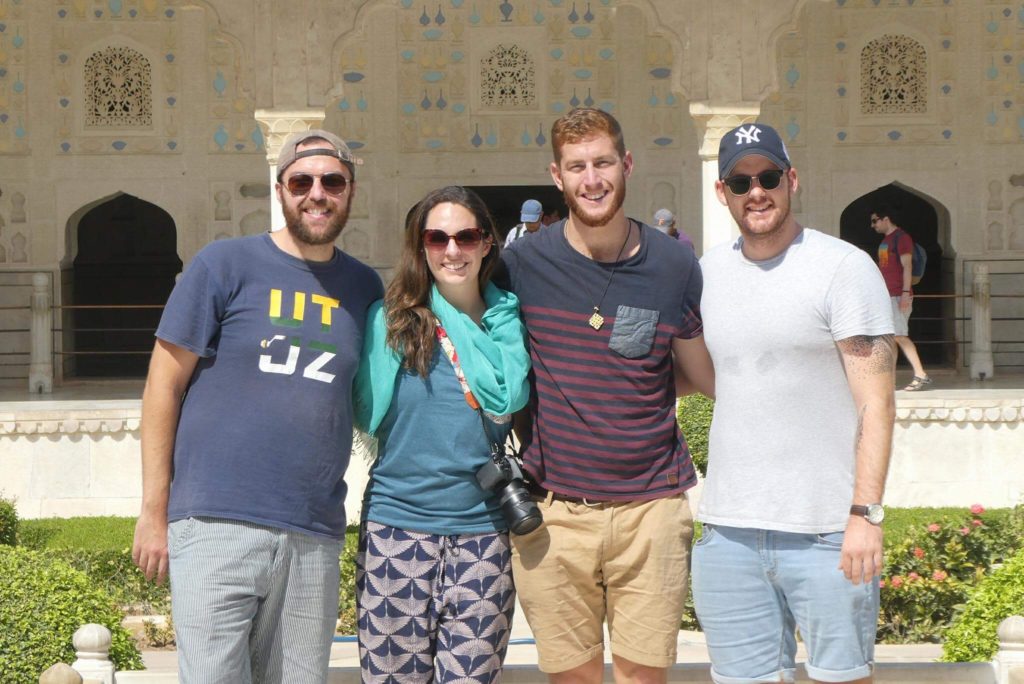
Rorie, me, Nic, and Phil at Amber Fort.
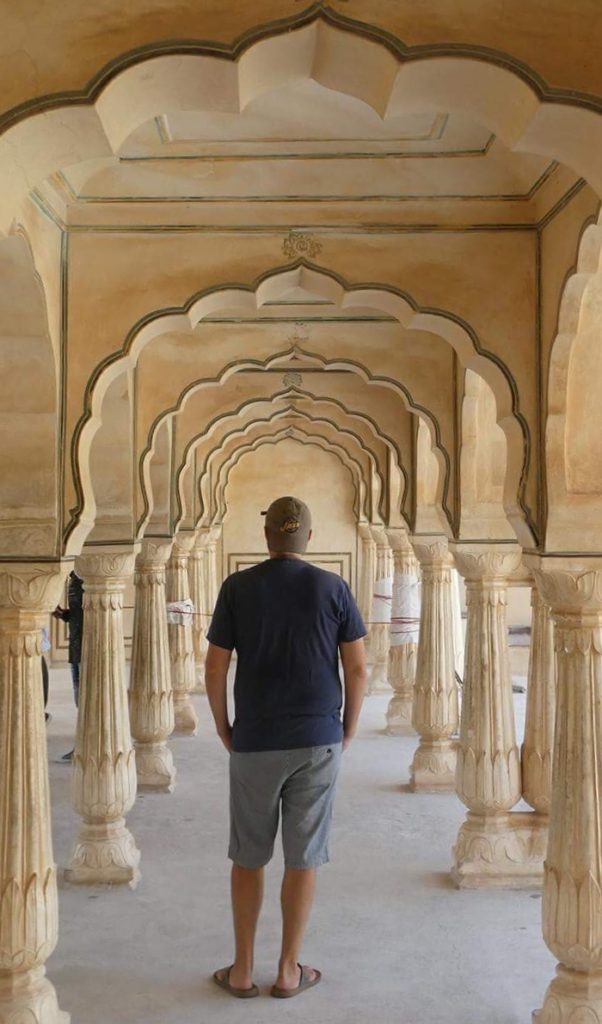
They really know how to build archways in India.
After our visit to the Amber Fort, we quickly took in the views of a couple more sights before having a final visit to a museum. The two sights we visited varied in terms of their impressiveness. The first was a water palace which, just as the name seems, is a palace in the middle of a lake. It was pretty, but hard to appreciate from afar. The other was the impressive and beautiful palace façade called Hawa Mahal, which was built by the king so that the women in the palace could look out on festivals and parades in the street without being seen. [Editor’s note: this was a theme in Indian royal architecture – they excel at beautifully carved stone lattice screens, and generally the purpose is for women to be able to view something without being visible. Depending on the level of feminism of the signage, this was either for the women’s own privacy or to keep the men from being too distracted from their work.]
[Editor’s note: Our time at Hawa Mahal had pros and cons. Pro: we managed to find a café with a rooftop terrace looking straight across the street at Hawa Mahal, which was a fantastic view for our entire meal, and meant that we felt no need to actually go inside and pay money to see it. Win! Con: The restaurant managed to feed the other three guys (Rorie, Nic, and Phil) but failed to bring out my dish. Every time we asked, the staff would tell us “it’s coming, 10 minutes”. An hour and a half later, we finally got up to leave, and confronted the staff at the front desk. The manager told me that what I had ordered wasn’t possible because “that type of cheese isn’t available at the market today” and when I asked when, precisely, someone was planning to tell me that, or why I hadn’t been told about that in the beginning so I could order something else, was just told “they should have told you, sorry.” After some cathartic yelling at the staff, I managed to get a discount off our entire bill, even though I did leave hungry without getting lunch after all. It was an unfortunate way to ruin some of the experience, but in hindsight was sort of hilarious in its incompetence. Sigh.]
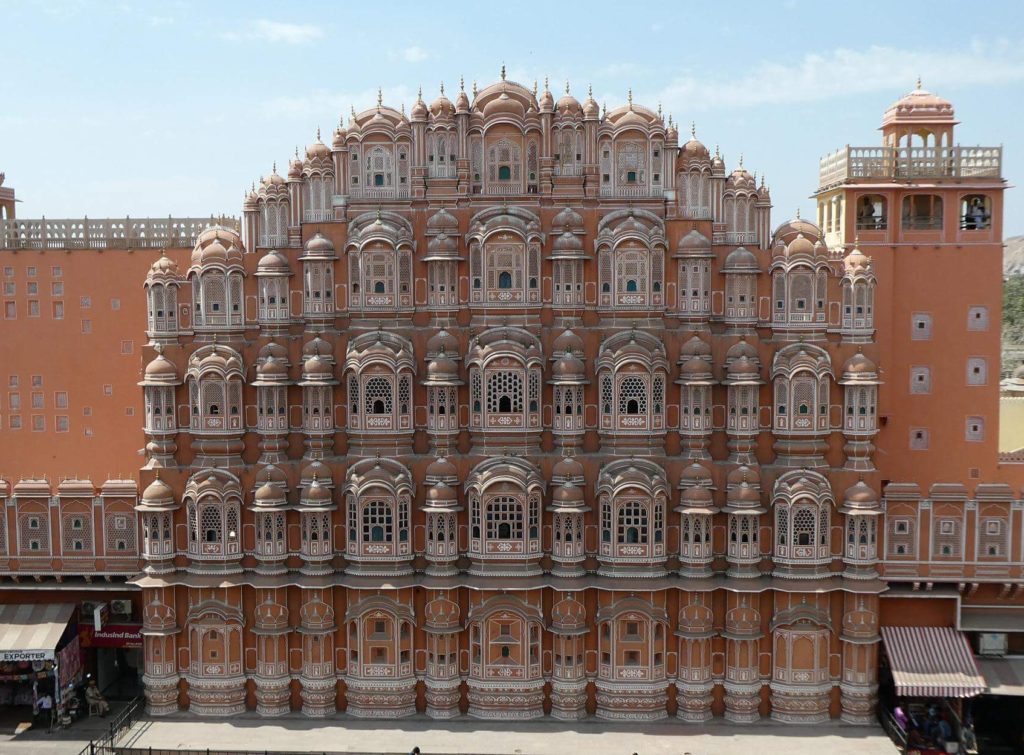
The stunning Hawa Mahal as seen from across the street.
Finally, we visited the city palace, which was the residence of the Jaipuri royal family for years and where they held royal processions. Though the city palace was quite ornate/pretty and the museum was informative, it still paled in comparison to the Amber Fort (perhaps because it was the first such structure we visited, but it absolutely stole the show). After finishing our long day of sightseeing, the 4 of us were joined by several others from our Delhi hostel who had also made the trip to Jaipur for dinner and “fancy” cocktails (not that these actually existed that we could find – they tasted terrible – but at least we tried, right?).
On our final full day in Jaipur we inadvertently spoiled Jess by indulging two of her greatest interests: science and shopping. [Editor’s note: “We” inadvertently spoiled me? I assure you, any indulgence was fully intentional on my part.] The first was accomplished by visiting Jantar Mantar, where we paid for 200 rupees (~$3) for an awesome tour of the king’s astrological observatory on the grounds of the city palace. The grounds looked like a science nerd’s playground, as they were filled with various structures and contraptions that were multiple hundreds of years old which the king used to tell the time (accurate to within 2 seconds, apparently), identify zodiac signs and predict monsoons (among other things). It was endlessly fascinating – even to a non-science person like me – to learn about this process and see the ingenuity of folks from hundreds of years ago.
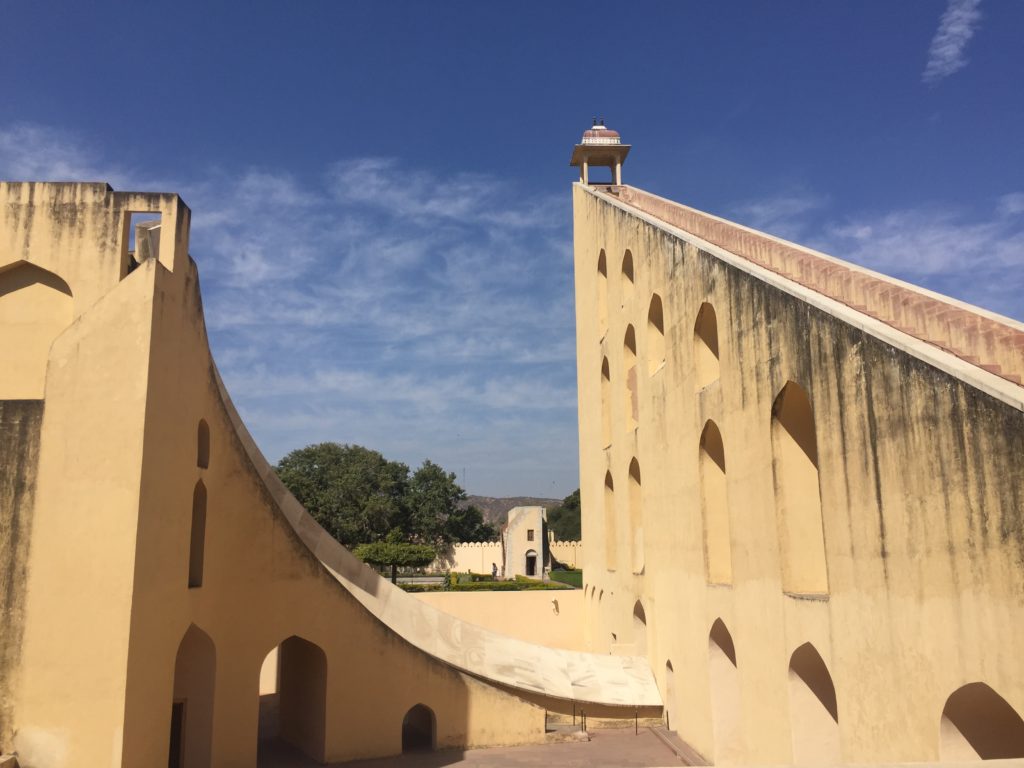
A huge sundial, reportedly the worlds largest! We were told it is accurate to within two seconds.

A view across Jantar Mantar of the structures.
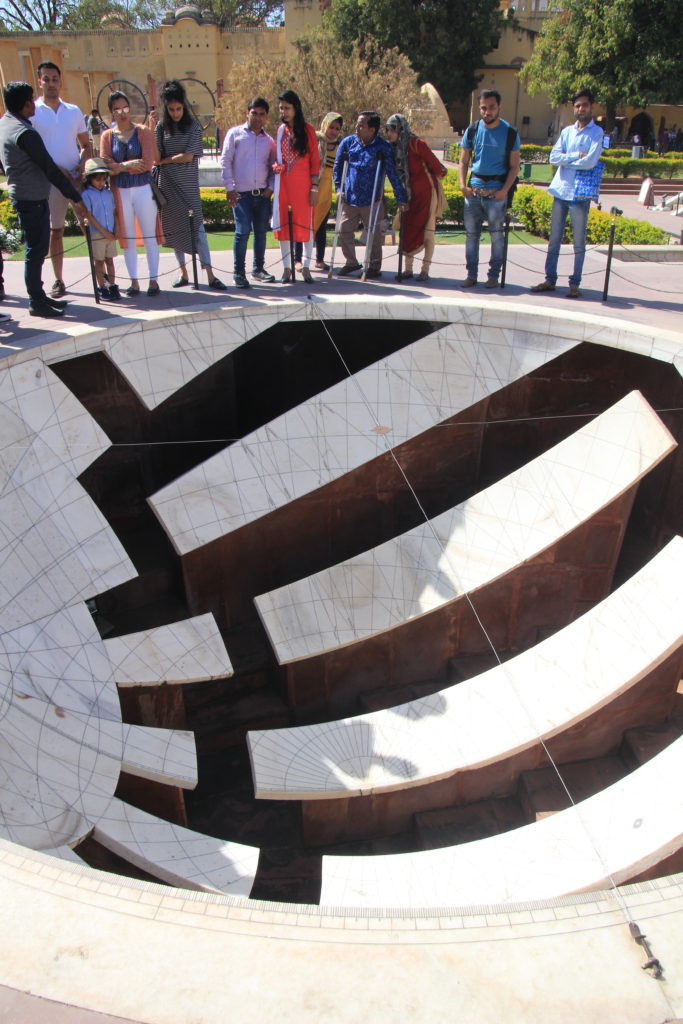
Visitors look down at one of the astrological devices used for determining horoscope.
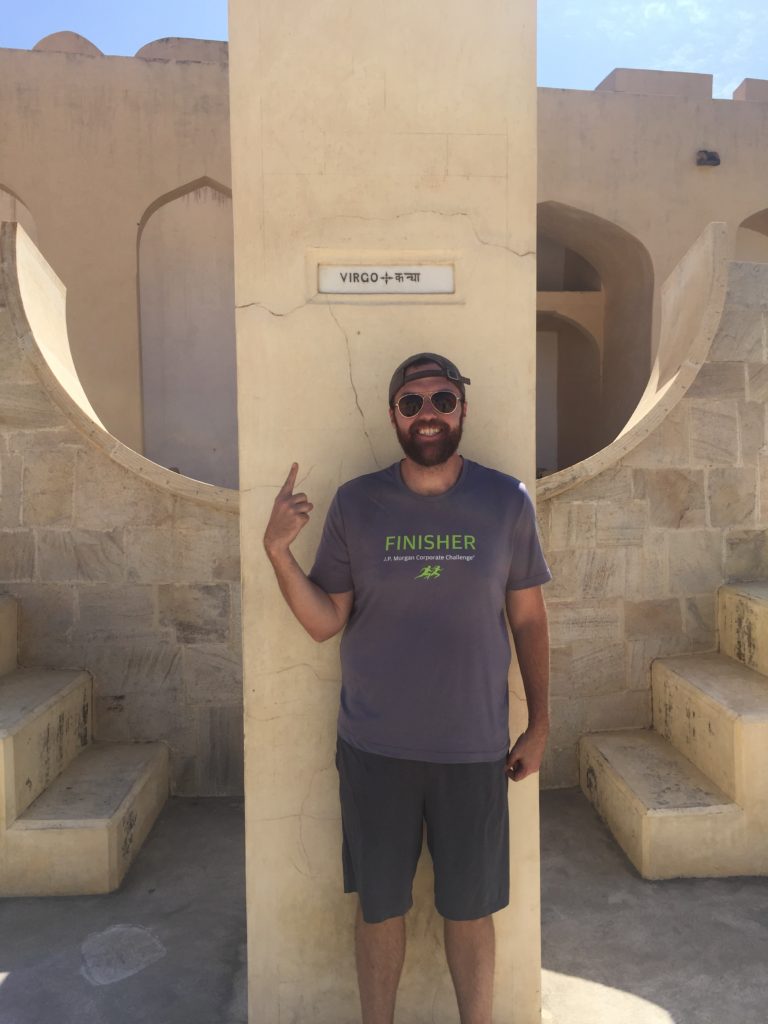
Rorie at the structure for his sign, Virgo. Astrological sign is extremely important in traditional Indian culture.
After that, we wandered to a bazaar in the city so that Jess could shop for various items. The highlight was going into the basement of a shoe shop where she settled on two pairs of shoes and was told they cost 4000 rupees (~$60). Shocked at this amount, we apologized and said that we wouldn’t be buying them and would settle on just buying another pair that cost 200 rupees, the price we originally intended to pay. With that they started dropping the price…and kept dropping it further and further until we got all 3 pairs of shoes for 1000 rupees (~$15). Jess was proud as a peacock at her “haggling” skills! [Editor’s note: This really was the peak of my haggling ability, and it was completely unintentional. I truly did only want to spend a couple hundred rupees per pair, and I truly didn’t need them. This, of course, is precisely why the haggling ended up so effective, though I was then faced with the unexpected challenge of fitting three new pairs of shoes into my already-full backpack. Oops!]
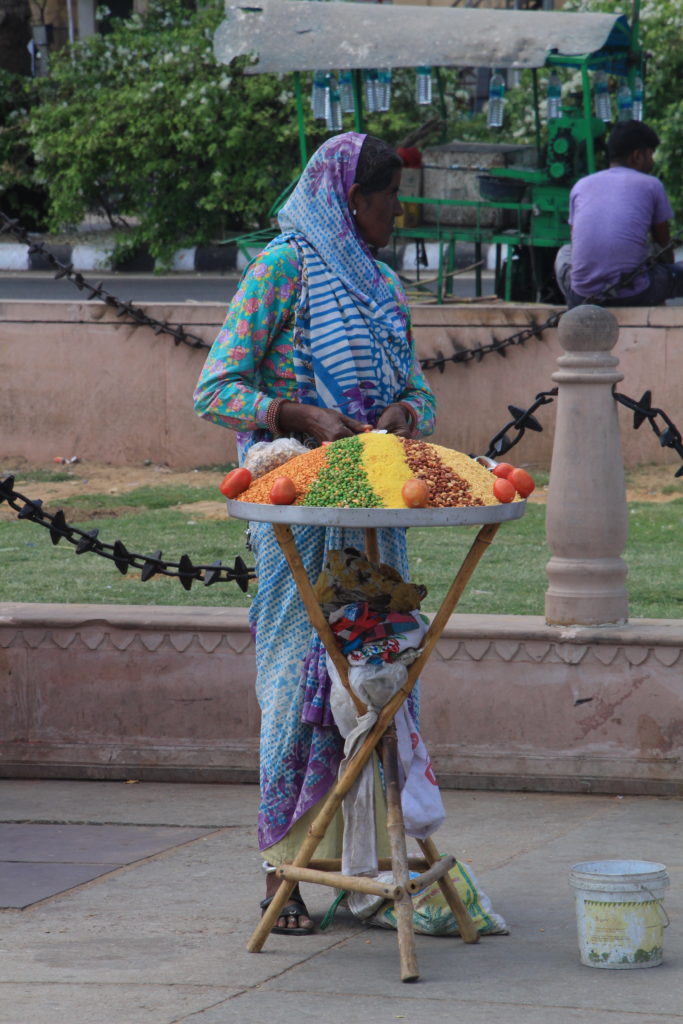
I didn’t take any pictures at the shoe market, so here’s a woman selling beautiful multi-colored grains.
The next day we were scheduled to catch a train to Jodhpur, which ultimately seemed fine on paper. We ate an early lunch and walked to the train station with plenty in advance of the appropriate time…to learn that our train was delayed by several hours. Crap. There’s no such thing as an Indian train station where you want to “hang out” for multiple hours, so we scrambled to identify a nearby spot where we could relocate for a while. Our first effort involved walking down the side of a 6 lane road to the bar at a ridiculously expensive hotel, but we blanched at the cost of items there and decided instead to haggle for a rickshaw to a less-expensive-but-still-pretty-expensive place near there to sit for a while. After a 5 hour delay (that included a long stretch on the train platform trying to avoid being pickpocketed) we finally caught our train to Jodhpur, where we burrowed into the top bunks in the sleeper cabin for the 6 hour ride and eagerly awaited the next city in our journey! [Editor’s note: After getting caught with the first massive delay, I downloaded an app that told me real-time train status updates. Of course we didn’t have the app earlier in the day when it would have been really useful, before we left for the train station, but you live and learn I suppose. The train platform, while not an enjoyable nor comfortable experience for me, was fascinating as we were basically the only westerners there and the subject of many curious looks. We got to watch other trains coming and going, which included people literally running on the actual train tracks, grabbing handles near the doors of moving trains, and pulling themselves inside. It was nuts.]
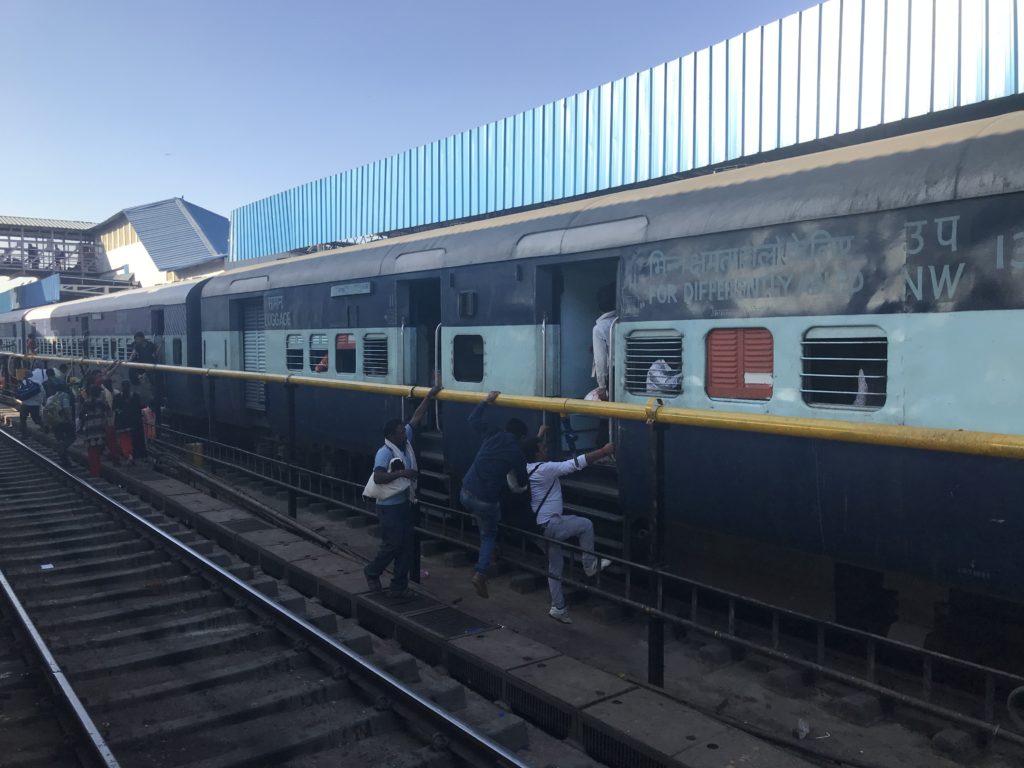
Men pull themselves from the tracks into a moving train as it leaves the station in Jaipur.
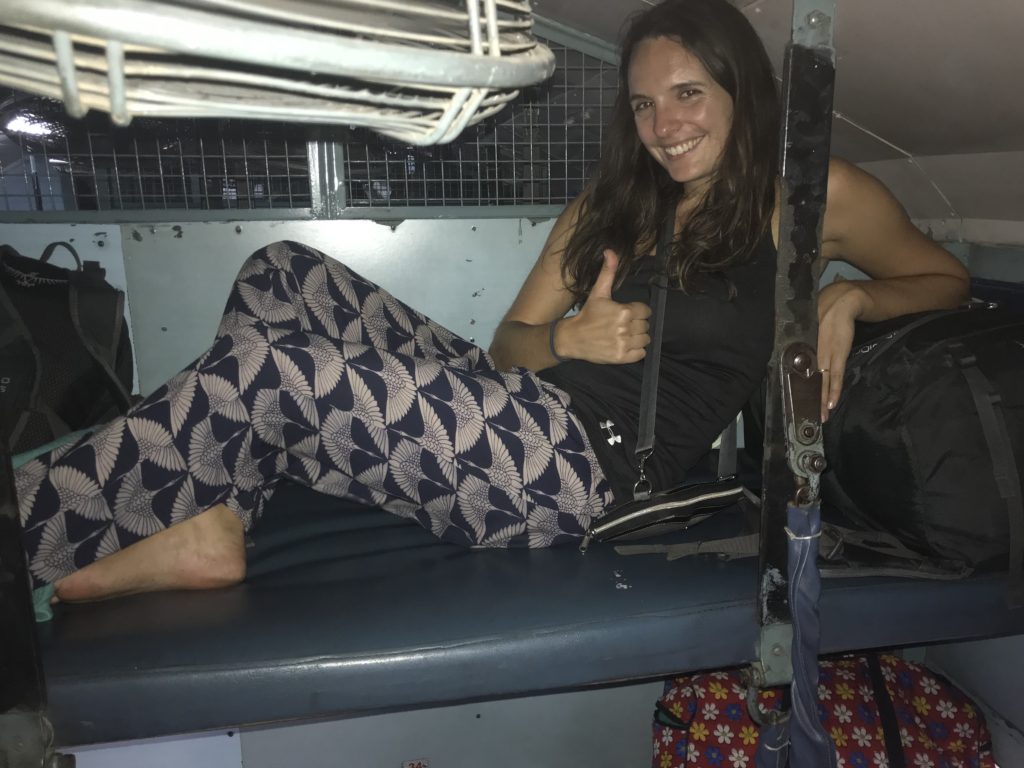
Holed up in my top bunk with all my stuff for our 6-hour train ride!
More bonus pictures below:
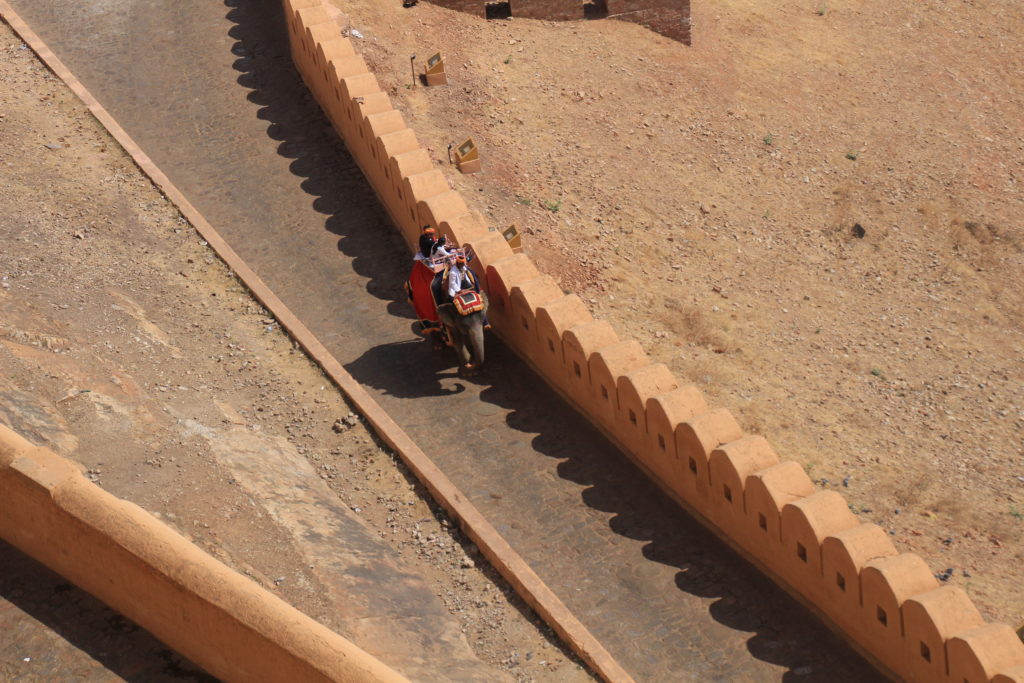
An elephant climbs the hill to the Amber Fort in Jaipur.
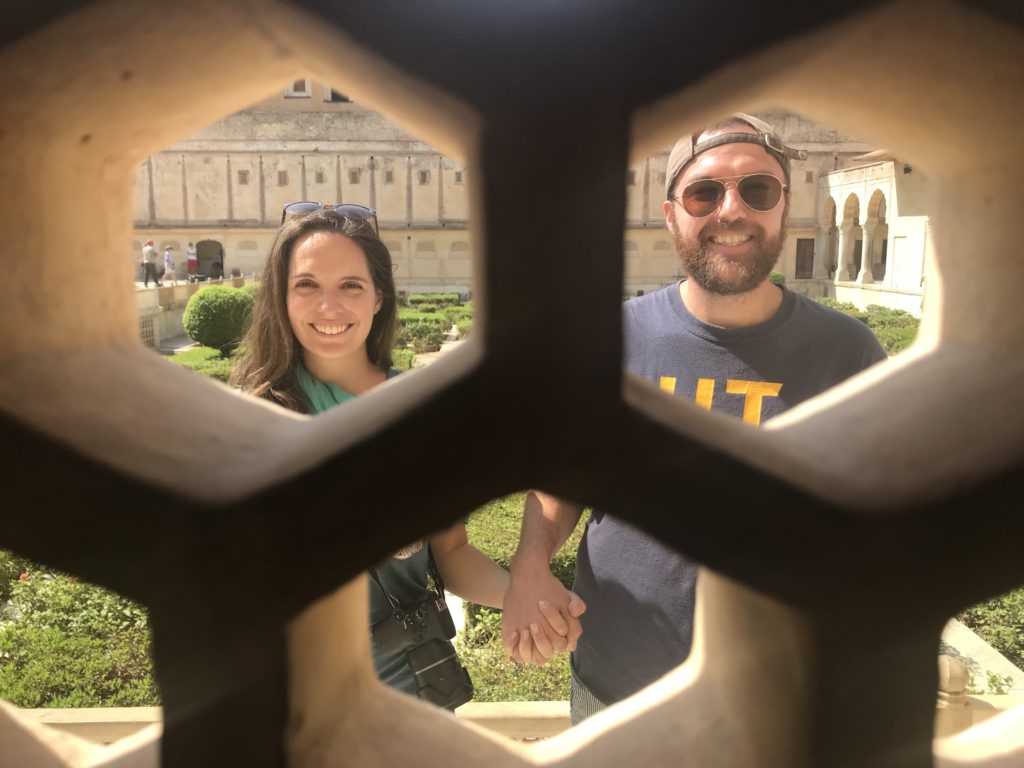
Looking through stone latticework.
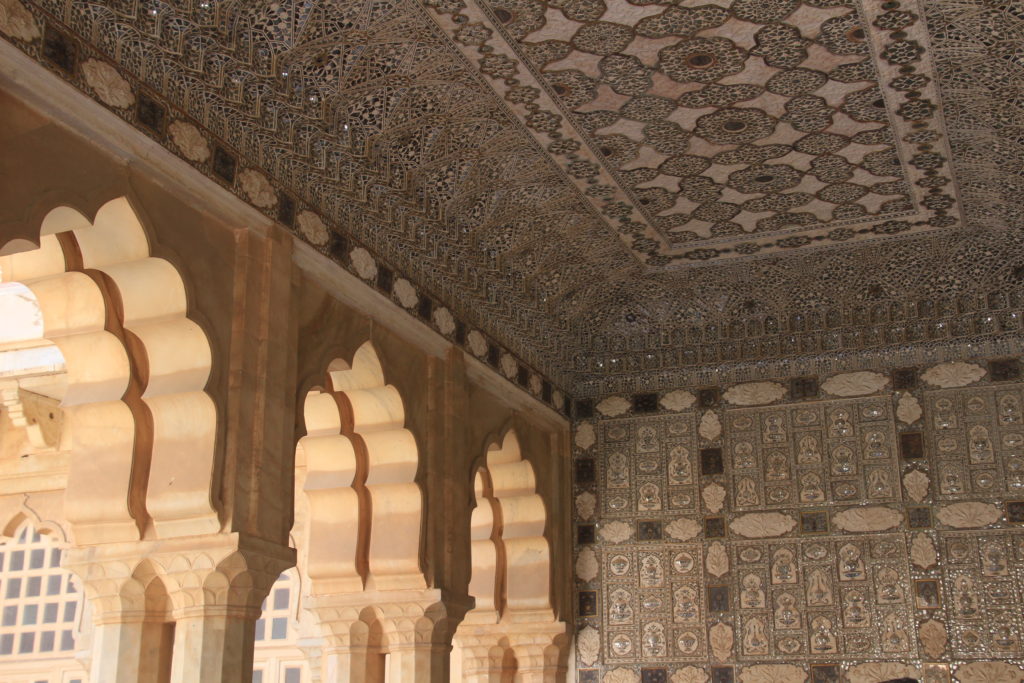
Intricate, beautiful stone inlay work at Amber Fort.
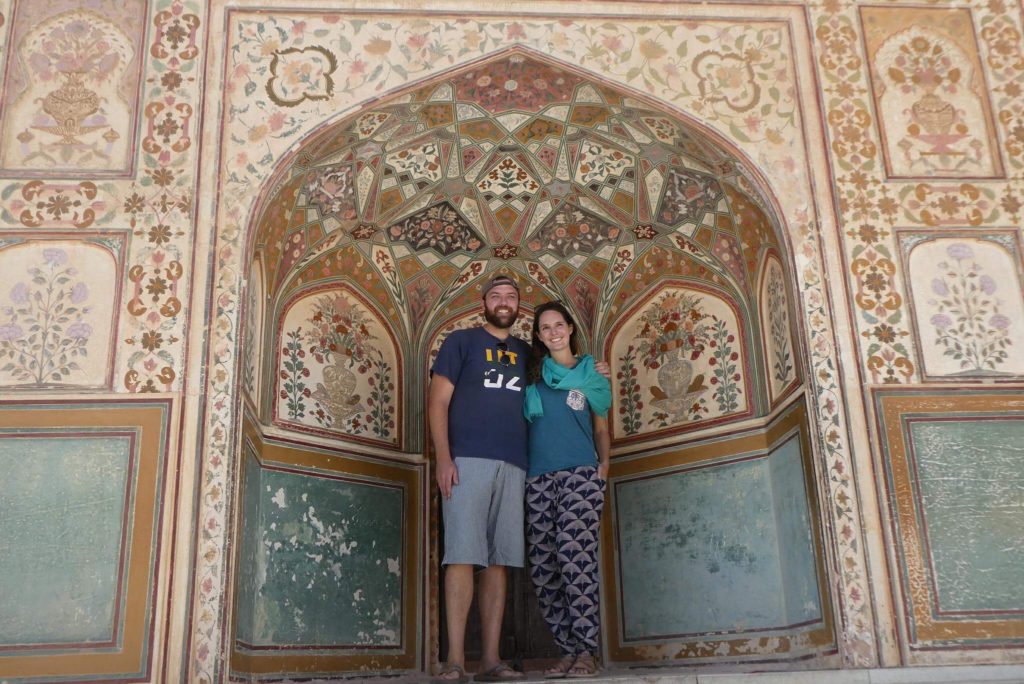
We couldn’t get enough of these doorways!
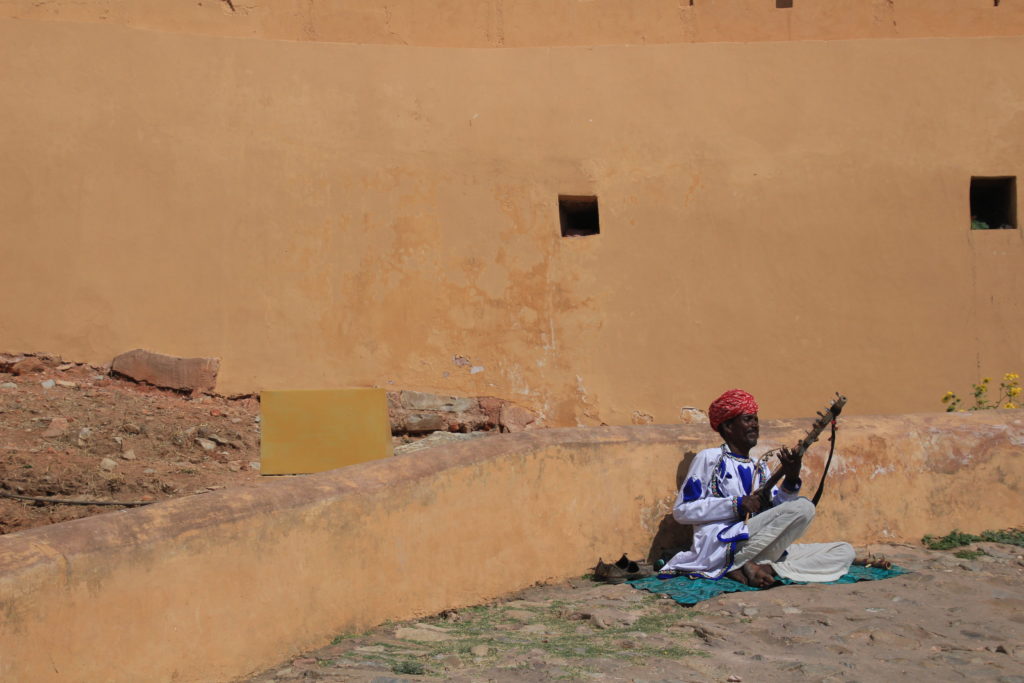
A man plays a traditional instrument on the path up to Amber Fort.
